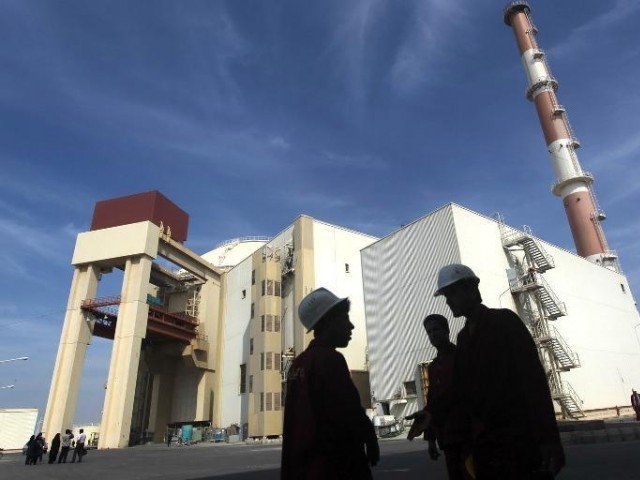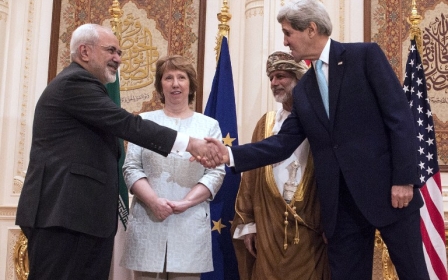Israel, Iran’s nuclear deal and the Southern Cone quagmire

Speaking from the suggestive location of Argentina’s Atucha II nuclear power plant, and amidst a dramatic internal political crisis ignited by the death of prosecutor Alberto Nisman, Argentine President Cristina Fernandez de Kirchner admonished international players that “in Argentina we do not want problems that are not ours to deal with”. She reiterated that they would not let anyone pass their conflicts to them, “or turn us Argentines against each other”. Fernandez’s words alluded to the internal and international political use of Nisman’s death and the hidden confrontation in the region regarding the US, Israel and Iran on the ongoing nuclear negotiations.
Argentine Foreign Minister Hector Timerman had earlier sent a letter to both US Secretary of State John Kerry and Israeli Foreign Minister Avigdor Lieberman, expressing concern over Israel and the US differences regarding the Iran nuclear deal. In a more recent BBC interview, he further elaborated on the reasons behind sending the letters and warned against foreign intelligence services operating without authorisation in Argentina. Although he preferred not to answer if that formal complaint was related to Nisman’s case, Timerman told the BBC correspondent that “we don’t send letters without evidence”.
A few days before dying, Alberto Nisman, who was in charge of the investigation on the 1994 Asociación Mutual Israelita Argentina (AMIA) bombing in Buenos Aires, claimed President Kirchner and foreign minister Hector Timerman had covered up the investigation in order to dismiss the accusations against the Iranians who allegedly perpetrated the attack. On 18 January, the day before he was going to discuss his investigation in Argentina’s Congress, Nisman was found dead in his apartment.
The prosecutor’s death, among speculation of suicide, assassination or induced suicide, provoked a tense internal political crisis and also international clamour. Without much evidence, several US and Israeli media sources directly or implicitly blamed the Argentine government and Iranian agents. Amid speculation of Iranian involvement in the case, Haaretz reported the expulsion from Uruguay of an Iranian diplomat at the beginning of February. According to the Israeli daily, Ahmad Sanad Gol, the Iranian embassy attaché, was allegedly involved, between November and January, in placing two explosive devices near the Israeli embassy in Montevideo.
Uruguayan Foreign Minister Luis Almagro confirmed the presence of a car belonging to the Iranian embassy close to the scene of the first bomb, and considered the coincidence unacceptable. But Uruguayan authorities strongly denied having expelled any Iranian diplomat, and they clarified that the first device was fake and the second was innocuous. Almagro declared too that he had warned Iranian and Israeli ambassadors in the past against using Uruguay as a playground for their conflict.
Despite the fact that the events could easily fall into the realm of speculation, unconfirmed rumours of rogue spies and conspiracy theories, there is evidence that Israel and Iran are again reviving the long-time confrontation in the Southern Cone. A day before Israeli Prime Minister Benjamin Netanyahu’s speech to the US Congress and amid ongoing US-Iran meetings to reach a nuclear deal, it appears that both are attempting to achieve the maximum result from the episodes and give a hard blow to their arch-enemy.
The narrative of Iran’s terror network in the US’ backyard
Among Iranian officials, former Iranian President Mahmoud Ahmadinejad has been one of the most fervent champions of a unified anti-imperialist political bloc in a new multipolar world. Ahmadinejad found in late Hugo Chavez and the so-called “Bolivarian” political governments determined partners with similar goals. Political and economic agreements with “leftist” governments in Latin America during his mandate bonded together the alliance and strongly increased Iranian presence in the region. US and Israeli officials, along with regional and international conservative media, took the opportunity provided by the alliance to expand the narrative around Tehran’s alleged terrorist activities in Latin America - a narrative exemplified by the representation of the Triple Frontier at the border between Argentina, Paraguay and Brazil as the supposed headquarters of Iran’s terrorist network in the western hemisphere.
The allegations of Iranian terrorist activities in the Southern Cone and Latin America first took shape when two bombs hit the Israeli embassy and the AMIA in Buenos Aires in 1992 and 1994 respectively. While the investigation into the Israeli embassy bombing soon disappeared from public notice, the AMIA case was derailed several times. Nisman resumed the investigation in 2004 and he quickly indicted several Iranian officials and Hezbollah operatives, though the report was criticised for lack of reliable sources. After the Memorandum of Understanding signed in 2013 by Argentina and Iran (mainly in order to interrogate the Iranian officials accused of perpetrating the attack), Nisman published a 500-page indictment on Iran’s terror activities in the region. Wikileaks cables exposed Nisman’s ties with the US embassy in Argentina and other foreign agencies, and since his death he has been depicted - especially in US and Israeli media - as a symbol of human integrity and the saviour of Western civilisation against Iranian terrorist infiltration.
Israel, Iran’s nuclear deal and the Southern Cone confrontation
While the Israeli government did not release any official statement on Nisman’s death, local media covered the episode widely and the government soon got involved in the case. Damien Pachter, an Israeli-Argentine journalist for the Buenos Aires Herald and a Haaretz correspondent, was the first to announce Nisman’s death on his Twitter account on the night the prosecutor was found dead. Pachter, who claimed he received the news from a reliable source, went into hiding few days after Nisman’s death. When he finally appeared in Tel Aviv, he declared that he had to flee the country for his own safety. In response to hidden accusations, the Argentine presidential house La Casa Rosada published on its own Twitter account Pachter’s flight information. The journalist denounced the tweet as a mafia-style threat - it resembled a cypher message in which the Argentine government was already hinting at the direct or indirect involvement of foreign agencies in the episode.
A few weeks later, Elisa Carrio, one of the most vehement critics of the government and a possible future presidential candidate, declared to Argentine private channel TN that Pachter was certainly working for the Israeli intelligence agency Mossad. Without providing solid evidence, she mentioned too that a supposed intelligence meeting between Syrian and Iranian agents took place on a ferry to Montevideo the night Nisman was found dead. And a few days later, Debka File, an Israeli intelligence news service, reproduced the story of a four-year operation by a fake Iranian defector who allegedly assassinated Nisman.
Speculation, political polarisation in shadow of nuclear negotiations
Unconfirmed news reports and public speculation have helped reinforce the narrative of the Iranian terror network in the western hemisphere, but have also proven the existence of an active confrontation in the region. In the middle of final bilateral meetings, Iran and Obama’s administration have remained almost silent on the events of the Southern Cone. Timerman reiterated instead in his recent letters that the Argentine government had offered to include the AMIA case in the ongoing negotiations with Iran, but that the proposal again went unheeded. With Israel cut off from the negotiations, it is to be expected that until Iran and the P5+1 powers reach a definitive agreement, the Southern Cone will remain politically polarised and in a state of confrontation in order to shape global public opinion around a possible nuclear deal with Iran.
- Massimo Di Ricco is an academic at the Universidad del Norte of Barranquilla (Colombia), news commentator, and journalist who contributes to several publications on the Middle East, Latin America, media and global politics.
The views expressed in this article belong to the author and do not necessarily reflect the editorial policy of Middle East Eye.
Photo: Argentine FM Hector Timerman sent a letter to both US Secretary of State John Kerry and Israeli FM Avigdor Lieberman, expressing concern over Israel and the US's disagreements regarding the Iran nuclear deal
Middle East Eye propose une couverture et une analyse indépendantes et incomparables du Moyen-Orient, de l’Afrique du Nord et d’autres régions du monde. Pour en savoir plus sur la reprise de ce contenu et les frais qui s’appliquent, veuillez remplir ce formulaire [en anglais]. Pour en savoir plus sur MEE, cliquez ici [en anglais].





